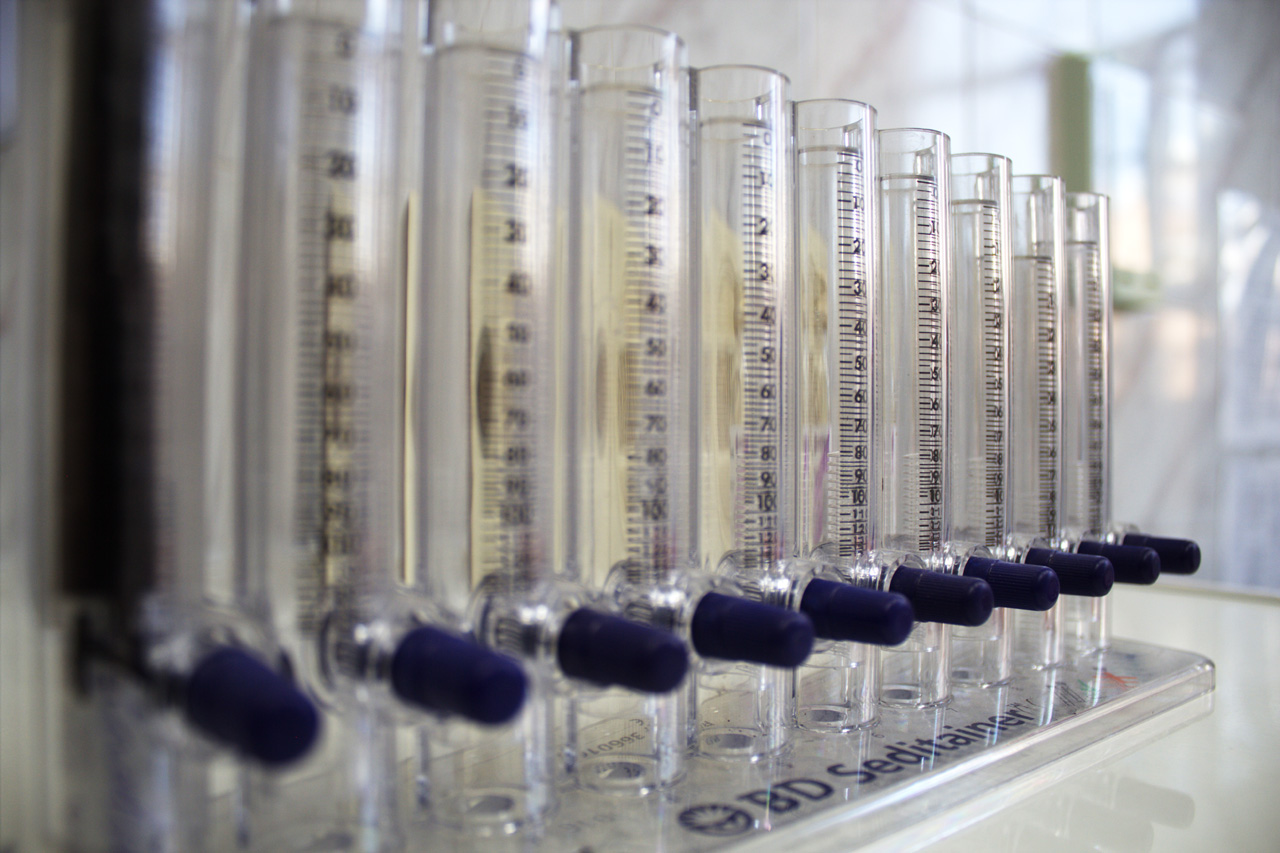EXAMINATION OF ALCOHOLIC BEVERAGES
 13.06.2017
13.06.2017
In recent years, the sale of alcoholic beverages, especially wine and wine products, has increased significantly in the consumer market of Kazakhstan. This is mainly due to the emergence of new producers of alcoholic beverages, as well as increased demand for it. Since the market has a wide assortment that brings large incomes to both the manufacturer and the seller, the temptation to counterfeit or increase their volumes by diluting with water or cheaper technical alcohol is always high. Therefore, the problem of conducting a comprehensive examination of all types of alcoholic beverages is very relevant, and the number of laboratories conducting research on alcoholic beverages is limited.
In order to protect consumers from counterfeit, falsified and substandard products, the safety of alcoholic beverages sold in Almaty is monitored annually.
The current system of examination of alcoholic beverages in the accredited Testing Center of the branch of the RSE at the PCV "NCE" in Almaty allows you to quickly determine quality and safety indicators, in accordance with the requirements of regulatory and technical documents and Technical Regulations of the Customs Union. The Testing Center carries out activities in the field of healthcare and ensures the sanitary and epidemiological welfare of the population by performing examinations with laboratory tests (studies, analyses) according to regulatory documents.
When conducting an examination by laboratory specialists, standardized test methods are used:
- ethyl alcohol – by distillation method using a glass alcohol meter;
- the amount of sugar is titrated, by the refractometric method;
- density, given by the extract – by the pycnometric method;
- sulfur dioxide, volatile acids and acids – by titration;
- micro-admixtures - by gas chromatography; toxic elements – by atomic absorption method.
Specialists of the laboratory of the Testing Center of the branch of the RSE at the PCV in Almaty conducted an examination of 256 samples in 2016-2017, 1.6% of them were found to be of poor quality.
According to the candidate of chemical Sciences, a specialist of the highest category of the branch of the RSE at the PCV "NCE" in Almaty, A.M. Shaikhina, the quality of alcoholic beverages sold should not be lower than the quality indicators provided for by state standards, specifications of alcoholic beverages. "So, during the examination of alcoholic beverages, the following main identification indicators are determined, provided for by the standards: organoleptic characteristics – appearance, color, taste and bouquet; physico-chemical indicators – ethyl alcohol, methyl alcohol, sugar, acidity, total extract, absence of toxic elements," said A.M. Shaikhina.
To date, there are an incredible number of different types of alcoholic beverages, but the most popular among them are vodka, wine, cognac, alcoholic beverages, rum, gin, whiskey.
Vodka, according to GOST for organoleptic indicators, should be transparent, with a characteristic aroma, with a homogeneous taste without a burning bitter or sweet taste, sometimes vodka has a specific aroma and mild taste. The safety indicators of vodka are determined by the presence of toxic micro-impurities in it, which are formed during the fermentation of food raw materials. According to GOST 30536-97, acetic aldehyde, acetic acid methyl ether, acetic acid ethyl ether, methyl alcohol, isopropanol, propanol-1, isobutyl alcohol, butanol-1 and isoamyl alcohol are classified as toxic micro-mixtures. Exceeding the micro-admixture standards is the basis for recognizing vodka as non-standard and low-quality.
Since ancient times, wine and wine products have been common among alcoholic beverages, which have an assortment variety and a multicomponent chemical composition, depending on climatic, agrotechnical, technological and other factors.
Grape wine is a drink obtained as a result of alcoholic fermentation of grape must, or pulp of fresh or dried grapes. Some substances pass into wine directly from grapes, for example, unfrozen sugar, organic acids (tartaric, malic, lactic, succinic, acetic, galacturonic, alpha-ketoglutaric, citric, pyruvic, glycolic, dioxifumaric, oxalic acids), also an almost complete set of fatty acids and a number of aromatic phenolic acids: n-oxybenzoic, cinnamon, coffee, ferulic, etc. There are 35 acids in wine in total. During aging, aldehydes and esters are also formed in the wine. It is this complex chemical composition of wine that leads it to bactericidal, antipyretic, tonic and other properties.
Cognac is an original strong alcoholic drink of amber—golden color with a specific bouquet and taste. For the manufacture of cognac, cognac alcohol is used, obtained by fractional distillation of grape wines, followed by aging in oak barrels from 3 to 15 years. The distinguishing features for ordinary and vintage cognac are mainly the following indicators: organoleptic ethyl alcohol, sugar, methyl alcohol, copper, iron, higher alcohols, aldehydes, esters, volatile acids, reduced extract, absence of toxic elements.
Alcoholic beverages — a group of alcoholic beverages (tinctures, liqueurs, liqueurs, punches, balms, etc.), a mixture of various alcoholic juices, morses, infusions and aromatic alcohols obtained by processing fruit and berry and aromatic vegetable raw materials with the addition of sugar syrup, essential oils, grape wines, cognac, citric acid and other food products, as well as alcohol and water.
A mixture of alcoholic juices, fruit drinks obtained by processing fruit and berry raw materials with the addition of sugar syrup, port wine, cognac, alcohol, citric acid and water is called tincture, for example, mint, aniseed, pepper, etc. The group of bitter tinctures includes rum, whiskey and gin.
The branch of the RSE at the PCV "NCE" in Almaty conducts an examination of alcoholic beverages of a specific brand in accordance with the requirements of regulatory documents and Technical Regulations TR CU 021/2011 "On food safety" in terms of quality and safety.



 13.06.2017
13.06.2017